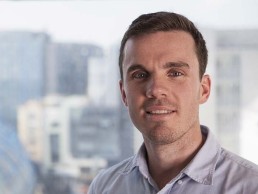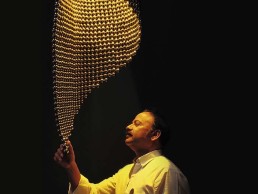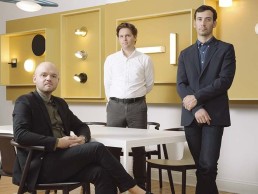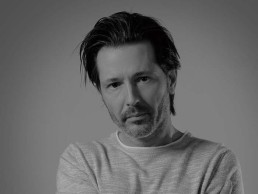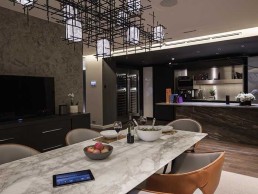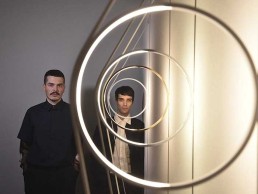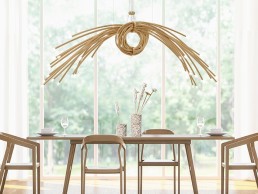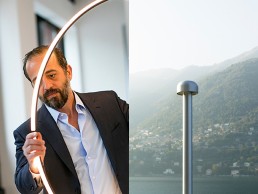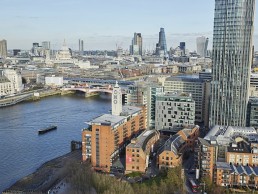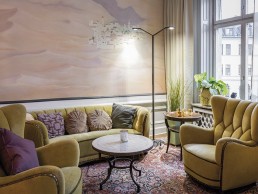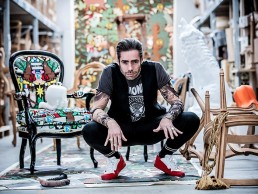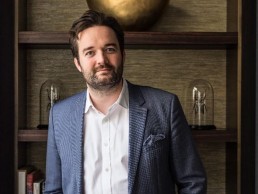Making Retail Relevant
To answer the question of how decorative lighting has become more prevalent in the retail arena, we also need to look at what would cause this evolution to occur.
At the time of writing and researching this article the threats of the collapse of House of Fraser is fresh in our minds, and retailer New Look has announced dozens of store closures. This has sparked debate about the business model retailers are using and how department stores, concessions and high-street retailers can stay relevant in these ever-changing times.
Analysis of successful department stores and retail brands such as Selfridges, John Lewis and Bloomingdale’s all provide a common set of principles, which may contribute to them remaining strong in the current climate.
It’s clear that in today’s market a strong online offering is key. However, this alone won’t keep stores open. To pull customers into the bricks-and-mortar, stores requires continuous, staged (rather than reactive) investment back into the fitout of spaces and making the shopping experience exactly that: an experience.
Experiential retailing puts the relationship between the brand and its consumers (now often referred to as guests) first and the actual act of selling second. For designers it’s about understanding the emotional connection between the brand and its consumers, and then reinforcing it.
Such experiential store design seems to fall roughly into two camps:
1. Hospitality experience: where the store engenders the feeling of a bar, restaurant or hotel, and a consumer feels relaxed and connected to a lifestyle. The store inturn becomes a place to ‘hang-out’.
2. Cultural experience: where the store elevates its goods to those of museum artefacts with the aim of them being viewed as pieces of art. And again, the store becomes a cool place to hang-out and learn.
The former example has started to place emphasis on FFE and in particular decorative lighting, which assists in creating the feeling of a residential or hospitality style. Decorative fixtures make a space more ‘human’ - they create intimacy, giving a human scale to a space.
A clever trick that lean and competitive retailers are aware of is adapting their stores to the way that their customers want to use them. For customers to connect with the brand, retailers require a clear brand message that is effectively but subtly applied through interior design and lifestyle image.
As a practice, we are privileged to have worked on a number of retail fitouts from luxury boutiques, to the high-street giants and all with vastly varied styles and brand messages, ranging from sophisticated and classic to minimalist and kitsch. The practical and operational needs of these stores vary immensely but something they all have in common is that their brand has a strong narrative, which makes our job as designers significantly easier.
I spoke to Sonia Tomic from Universal Design Studios, with whom we have recently completed a phase of the Selfridges Birmingham fourth floor renovation. Sonia comments: “Stores seem to be more ‘lifestyle’ and experience-focussed now. Retail clients see the benefit in their interiors feeling more gracious and home-like in some instances. Spaces where customers come to interact and inhabit the brand, rather then just shop for a product.”
So where does a lighting consultant fit into this equation? If the client has engaged an interior architect and lighting consultant it means they are aware of the value that lighting can add. Decorative and architectural lighting installations can be a relatively cost-effective way to fitout large premises with an impactful brand standard. If we are involved at the right stage of the project, the decorative luminaires can be made to ‘work’ a little harder, which can reduce the quantity of focussed spotlights required and create layers of light that make the environment richer. Examples of this principle being applied can be seen in the following projects:
Opening spread image: Alaïa, London – This distinctive yet neutral decorative pendant luminaire not only provides a canvas for the changing fashion ranges but also provides a consistent colour of light and quality of lit environment across all Alaïa fashion houses. The luminaire contributes to a large portion of the functional lighting within the space and the most recent version (specified in the new Alaïa flagship store in New Bond Street) uses LED light sources with excellent colour rendering.
1. Selfridges Body Studio, London – This Neri&Hu Japanese-influenced fitout provides a soothing environment using natural materials. Large, decorative back-illuminated Shoji screens with textured paper have been recessed within the walls and suspended as feature pendants over the central void to provide a diffuse calming quality of light, to help increase body confidence and dwell time. The large pendants over the escalators were installed with colour tuneable white LED lighting to enable their warmth to be adjusted on site to best suit the transition between floors within the store.
2. Youngor, China – This flagship store engulfed five Youngor brands under one roof and required a feature decorative pendant within the large atrium. Clustered suspended lines of light fill the store’s triple-height atrium – the installation provides a confident yet neutral theme of quality for the space and provides the right level of functional light, meaning no further lighting intervention was needed.
www.nultylighting.co.uk
Vibhor Sogani
Born and raised in Jaipur India, Vibhor Sogani grew up soaking up the richness and cultural heritage of Rajasthan. His father, a geophysicist, was tasked with research assignments in western parts of the country, which in turn gave Sogani the opportunity to travel alongside him - often staying in camps and tents in different locations for months at a time. As a result, he witnessed diverse landscapes, rural scenes and indigenous cultures.
“As an adolescent I loved playing with forms and materials, creating a lot of mindless and imaginary stuff, which perhaps triggered a creative thought process, supplemented by the knowledge acquired from my travels with my father,” Sogani tells darc.
Perhaps, this is why mainstream education didn’t appeal to Sogani… After finishing high school in Jaipur, a careers advisor suggested a career in design after noticing his visualisation skills. This suited Sogani’s way of thinking and encouraged him to pursue design as his primary vocation. And so, five and a half years at the National Institute of Design ensued, transforming his outlook on life and giving the designer a more definitive direction to his creative indulgences. “This is where I gained multi-disciplinary exposure to creative fields such as films, textile, furniture, ceramics, graphics, engineering and machining, as well as insights into arts and crafts. Design was seamlessly integrated with my way of life, way of thinking and way of observing the world around me.”
Post NID Sogani worked in various R&D centres for a number of large organisations, gaining knowledge on the industrial production processes, management, operations and logistics. However, he found the environments too structured and lacking in creativity and so pushed to set up his own practice. “I started with a small studio in New Delhi as a consultant; for the first few years I picked up a range of projects in a deliberate effort to expose myself to the industry and all the opportunities it has to offer. I consulted on a variety of projects covering graphics, communication, retail, exhibition and industrial design. Those were years of immense pressure because I was learning about different aspects of the profession and practice, while meeting the expectations of my clients. It was crucial and served as the catalyst in opening up my canvas of design practice combined with an interdisciplinary thought-process. This period marked a decade of assignments that laid the foundation of what I do today, albeit in a subconscious manner.”
2006 was a turning point for Sogani, when the opportunity came to work on an event showcasing international lighting brands – this was the beginning of his lighting design portfolio. “I began playing with both light and art in the form of light installations and have worked in this area of industrial design ever since – it has been an engaging and rewarding journey so far.”
For Sogani, light in a sense is formless and acquires its form from the source and material it is reflected from or refracted through. Therefore, trying to mould light into a particular expression is like trying to give shape to air. “The form of the luminaire provides a tangible story, but it is always the quality of light that guides the experience of that luminaire and surrounding space,” he says. “The process of designing with light as the guiding principle is enriching and the wisdom acquired from the process can be applied to other forms of design as well, which makes it even more important to understand.
“Lighting is an interesting domain in product design and also the fourth dimension of architecture. Light is a crucial aspect that reveals the materiality, depth, expanse and warmth in a space; thus, it is extremely important to have good lighting within spaces; that enhances their utility and reflects the personality of the people inhabiting them. With the layering of lighting, one can enhance the utility of a space in an intelligent manner.”
Talking artistic influences, for Sogani, there isn’t one single icon or designer, yet many whose work has inspired him during his career. The likes of Zaha Hadid, Marcel Wanders, Phillipe Starck, Archille Castiglioni and Richard Serra to name a few. “Their work represents powerful ideas in a simplistic manner that I appreciate the most,” he says. “I feel we all come across innumerable sources of inspiration in our day-to-day lives, especially when we are in a relaxed state of mind. I derive my leads through observations from natural phenomena, forms in nature, and the physical environment, or a story that has an emotional appeal.
“There are certain inherent thinking methods that guide those observations, and I get my triggers which help me formulate my thoughts in a manner that help me translate them. This journey, which starts with a random observation or a thought, and triggers a chain reaction in the mind, is very exciting and gives me a tremendous adrenaline rush. This is always the best part for me in the journey of a specific design process or project.
“As I acquire new observations and sources of inspiration, my thoughts evolve, thereby adding layers to my design language. Over the years, the pursuit of simplicity has seemed to work in my approach as a principle design argument. ‘Simple is Beautiful’ and ‘Less is More’ are the fundamental principles that guide me to work towards timeless designs that one does not get bored of. I try to make forms that appear effortless.
“Simplicity is beyond fashion or individual interest, it is revealing of truth of the subject in question. It is often difficult to achieve, as it requires extensive deliberation with oneself, and a particular mastery over the craft. Maybe that is why it’s timeless, because it portrays a pinnacle of design process. Whenever I manage to strike a simple cord with my creation, be it designs or an artwork, it gives me a sense of achievement, and it is this feeling that defines my ‘style’.”
A designer has to play a multi-faceted role. Right from the understanding of the project or product, to creating a tangible three-dimensional object that has a definitive function. In the process, one has to thoughtfully combine technology, ergonomics, aesthetic, function and many other factors while leading it to the market. To be able to design successfully, each time, a designer has to literally get under the skin of the client / subject and comprehend the requirements in a pertinent context.”
In terms of changes within the design industry, for Sogani, a lot has happened in the last few years in the sphere of design and technology and at a supreme pace. “In the past, lighting and associated technology was very limited compared to its present avatar. Today, it is very effectively acting as the fourth dimension of architecture and rightly so. The fact is, the impact of this medium can bring about a dramatic change in the quality of architecture and its relevance. This realisation and availability of suitable alternatives is leading to the rise in demand of quality lights, energy efficient sources and even lighting consultants. It is a highly positive trend and the industry is growing; there are new developments every day, in terms of material and technology. With the changes in materials and technology, one must update their methodology and practice. Also, it is the era of smart technology. The interactive interface in products is something I’m fascinated to explore.
“On the other hand, with the fast paced changes in technology, and therefore design, somewhere the romance of regional diversity is lost. The cities change, the regions, even the countries change. But the visual quality of the architecture and the associated aspects have started looking so similar. At times you can’t tell where you are because it all looks so similar. I feel a loss of diversity is a byproduct of technology.”
Sogani’s path in design so far has been somewhat of an organic one, with the designer taking one step at a time…however, looking ahead his intent is to continue growing the collection and make his mark on the global design industry. “The collection is growing in an interesting way and a very distinctive quality is emerging in the range. Design per se has to be functional yet aesthetically stimulating with products having a meaning and not just produced for the sake of it. While remaining honest, products must convey a character to their users, and resonate within their ideology or personality. They must have a meaning of their own, which shuns the idea of mass consumption and ensures minimum use of resources. I believe this is the very least a good product design should carry forward.”
Rich Brilliant Willing
With a shared belief in the power of light to create atmosphere, Rich Brilliant Willing founding designers Theo Richardson, Charles Brill and Alexander Williams spoke with Editor, Helen Ankers about their design process and work with OLED technology.
Rich Brilliant Willing (RBW) is a Brooklyn-based studio that designs LED fixtures for hospitality, commercial and residential projects. Through an experimental approach guided by technology, creativity and simplicity, the studio continues to break new ground in lighting design with products ranging from subtle to statement pieces.
RBW’s three founders – Theo Richardson, Charles Brill and Alexander Williams met at Rhode Island School of Design while studying furniture design. As children, the three designers all shared a keen interest in taking things apart, to then learn how to put them back together, and it was a fascination with problem solving that sparked an interest in design as a career.
On graduation from Rhode Island, the trio found themselves working independently within fine arts, architecture and interior design in New York. Richardson and Brill landed their first jobs as associates at architectural firms, while Williams worked in a fine arts gallery in sales for sculptures. In 2007 the trio made the decision to share a studio in the East Village, allowing them the opportunity to work independently on projects, a move that would eventually lead to a collaborative partnership. The first project the designers worked on together saw them team up with Urban Outfitters – creating interior, store fixtures and fabricating display tables.
“The first ever pay check to Rich Brilliant Willing came from this project,” the trio tell darc. “We didn’t even have a business account to cash it out to - this lead to the birth of the business in 2009.”
Initially the RBW founders were more interested in creating a design consultancy and even travelled the world to pitch proposals to numerous agencies. “During this journey we were exposed to the marketing and sales distribution of larger design manufacturers and it struck us that we could come up with our own marketing plan via direct online sales. This turned our focus to creating and designing our own brand and products.”
With the foundation of RBW design studio based on the fostering of partnerships, the design team behind today’s product portfolio has since grown beyond the original founders, with Brenden Feucht coming on board as Lead Designer. Also influenced by design early on in life – thanks to his parents who both studied the subject, his curiosity with how things were made was instilled in him from a very young age.
“Being the collectors they were, my parents took me to countless antique shops where I was exposed to a long history of craft,” Feucht tells darc. “Although at the time I would never have admitted it, I am grateful for the experience and believe it affects a lot of my design decisions today.”
Feucht’s experience before RBW consisted mostly of custom architectural / fixture design, manufacturing and vendor management. With Feucht having always enjoyed the relationship between manufacturer and designer – there is a vital collaboration there in order to create product that makes an impact.
RBW is founded on a belief that light is a powerful thing. When it comes to hospitality, a warm, welcoming light is what sets us at ease and makes us feel at home. In the workplace, light sets the tone of an employee’s day. The right light lifts the mood, inspires productivity and motivates us. At home, light enlivens the little things – our morning routines or the moments we spend with friends. At RBW, the belief is that nothing is more important in shaping our sense of wellbeing than quality of light.
“The magic of illumination sets it apart from working with other product types,” the designers say. “It is so much fun to see ideas come alive when they emit light. Our design ethos is to use a luminaire to push technology and to determine what impact it has, or creates, in an environment. We focus on the intangible aspect of product opposed to just aesthetic. For example, our newest collection Vitis features flicker-free dim to warm capabilities allowing the product to stand out from the crowd.
“We had some great ideas at the beginning of our studio’s life – such as the Excel floor lamp, which helped put us on the map as designers of lighting. The adoption of LED technology, while exploring its new advancements allowed us to experiment with light in atmosphere. We recognise the benefits of utilising LED in contemporary design for its potential to bring both warmth and energy efficiency to everyday life. Lighting has a transformative element once lit and catches the attention and serves as a focal point of a room… the overall materiality suggests and creates different senses.”
For RBW, materiality inspiration is based on practicality – as in how efficient the installation, construction and application is of a fixture. “Lighting should bring ambience to a space,” they say. “It has the ability to change the mood of a room and ability to draw attention to furniture – it’s colour and it’s texture. Lighting can alter and enhance the way we perceive a room.
“At RBW we try to gain a different perspective when creating product by working with our end users… some of our most notable projects have been our collaborations with hospitality and interior design firms Meyer Davis and Rockwell Group. The products we created with them provided amazing insight into the way we look at our products being implemented in spaces people live and work in every day.
“We like to think of ourselves as having design personalities rather than a specific style, which allows us to draw inspiration from many areas. In doing this, we believe that our products offer a different perspective and inherently create a unique atmosphere in any space.”
For the design trio, architectural and decorative lighting go hand in hand – with architectural lighting providing layers of light to support the décor and decorative lighting creating a focal point for the eye.
The success of the RBW design studio stems from embracing and adopting technological advancements, pushing the boundaries of its services and product offering. The designers have invested heavily into research on OLED – an emerging source of illumination that has, until more recently, gone largely unexplored in the world of lighting design - however, they are now making their way into consumer goods.
“Because their entire surfaces are visible however, OLED remains exceedingly rare in lighting applications where any dark spot would be immediately apparent,” say the designers. “As manufacturing volumes increase, lighting with OLEDs is expected to become more commonplace, beginning with niche applications in automotive, aerospace and industry. While OLEDs remain at the infancy of lighting exploration, our experimentation is driven by the possibilities of lighting design to improve everyday life.”
Talking more generally around advances in technology – both positives and negatives - for the RBW founders, the smartphone is by far the best and worst development in design. “While we strive to be on the front line of technology within lighting - it may sound funny to say this - but while the smartphone is the most influential tool in our lives today, the amount of time we spend on it each day – instead of being immersed in our environment – is robbing us of some amazing experiences!”
Being able to be creative, experimental, individual and then seeing it all come to life at the end is, for Richardson, Brill and Williams, one of the best things about working within design and reward in itself.
Constantly looking to push themselves and find new problems to solve, Richardson, Brill and Williams plan to put more of an emphasis on public spaces over the next twelve months and how to better improve the atmosphere of these environments, which people can sometimes spend their entire days in.
“We believe in the power of light to create atmosphere,” they conclude.
Matteo Ugolini
With a passion for nature and a deep love of the sea, Karman’s Art Director Matteo Ugolini follows his own design path - creating striking decorative lighting pieces, each with their own personality.
Having grown up in Pesaro, a town in the Marche region of Italy, which is characterised by beautiful hills and beaches of the Adriatic coast, Karman’s Art Director Matteo Ugolini unsurprisingly developed a deep love of the sea and nature as he was growing up. At the same time Ugolini also had an undeterred love for adventure and drawing, with the pencil one of his favourite playmates!
“I love any artistic and creative form and my path has always been clear from the beginning,” Ugolini tells darc. “So when I finished artistic secondary school, I immediately enrolled in an industrial design course at the CNIPA in Ancona. My noisy passion for engines and my idol, bike racer Valentino Rossi have also inspired me along the way… the saying ‘the most important thing isn’t the winning, but the taking part’, doesn’t really do it for me.
“From an early age whatever I designed ended up in the drawer of my desk, but I felt the need for the things I designed to be appreciated by others. Unfortunately, social media didn’t exist at the time so there was no way to share! When I realised that, through design, I could enter people’s homes, giving shape and function to my ideas, I fell in love with it. After my industrial design course I went on to gain some work experience in several multi-disciplinary studios where, in addition to design you were confronted with architecture, photography, interior and graphic design and projects.
“However, at that time, the military service was compulsory, so I couldn’t accept any long-term work commitments related to what I had studied for – I had to adapt and instead took on more classic jobs that all youngsters do... I worked in a furniture factory, as a waiter and so on… experiences that still help you to grow and understand even more what it is you really want to do in life.”
When it comes to inspiration, Ugolini tells darc that while he has always admired the imagination, intuition and irony of Philippe Starck, he has always deliberately detached himself from the work of other designers so as to avoid being influenced by them and create his own identity and something different.
“I have my own personality and my own style,” he says. “What we create comes from within each one of us, it is innate and fully reflects what we are. Normally, those who contact me for a project want my style. I cannot even transmit it to other people because everyone has their own style and that’s why I work alone.”
Ugolini’s transition into lighting came about when he bumped into Davide Diamantini, who he had met in previous years when Diamantini was involved in another design project. “From the moment we saw each other again, a fantastic journey started with Karman and ever since, a great passion was born for that ‘thing’ that gives life and soul to any form… light!
“Within a particular setting, a piece of furniture, a sofa or a colour are a matter of taste, but light is the most difficult thing in an interior design project because, depending on how it is used, it has the power to enhance or even worsen everything that surrounds it. Often suspended at the centre of everything, as a true hero, it is at that precise point that the lighting object must strike, amaze and draw attention to itself in order to create the right atmosphere depending on what it wants to convey.
“The goal is and always will be, to design what I like, what interests and excites me and what, at the same time, makes me feel good. The most frustrating thing is when you have to change your initial vision for an idea due to technical problems or costs. But then comes the moment that wipes out all the frustration and all the effort and hard work and you see what was once in your imagination and is now before your eyes.”
Crestron explores technology, interior design and colour
(UK) - Crestron to collaborate with leading interior and lighting designers for LDF.
Leading lifestyle technology expert Crestron will explore the relationship between technology, interior design and colour in a series of exclusive talks, held at is Design Centre Chelsea Harbour showroom.
The Colour of Light, hosted by Rebecca Weir
As creative director of Light IQ, a leading lighting design company, Rebecca will deliver fifteen minute inspiring and practical presentation sessions focusing on lighting technology – how to maximise the creative potential of light and pushing the boundaries of illumination.
When: On the hour from 11am – 3pm, Tuesday 18 September 2018
Collaborating in colour – bringing bespoke design to home technology
Respected editor and interior designer Kate Burnett will join Crestron in moderating an inspiring panel of experts, discussing the importance of brand collaboration and partnerships when designing and personalising a home automation project for a client.
When: 11am – 12pm, Wednesday 19 September 2018
Formantasma's WireRing now available
(Italy) - WireRing from Flos now available worldwide.
Designed by Italian artist duo Formafantasma, WireRing for Flos is midway between a wall and floor lamp, providing indirect light.
It is composed of two separate elements: a custom-made belt-like electric cable and a ring that contains a LED strip. The customised tangent cable, made of coloured rubber, guarantees electrical supply to the aluminium ring that hosts the light source and acts like a heat sink.
The simple, essential design of the lamp is enhanced by refined finishes: white, grey and light pink for the cable; white, grey, pink, polished black nickel and polished gold for the ring. Cables and rings can be freely combined together, giving a unique touch to any environment.
“Disassembled, the lamp is reduced to a minimum. When mounted, it then reveals sculptural traits. WireRing is an exercise in reduction: stripped-back to its most essential components, the lamp delivers the most with the least," say Formafantasma.
Read darc's exclusive interview with Formafantasma
Yellow Goat Design - With a Twist
A simple gathering of brass tubes with a loop in the middle and an LED light at each end makes sure this design's flourish is all tied up in perfection. Specified with a brass material and lit with LED bi-pins, YGD can customise any curlicue for budget or style.
Atrium debuts new Flos ranges
(UK) - New collections launch from Michael Anastassiades and Barber & Osgerby.
During a VIP preview on 21 June, Atrium showcased Arrangements for Flos by Michael Anastassiades and Bellhop by Barber & Osgerby at its London-based showroom.
Arrangements is midway between a light sculpture and an industrial design object. Conceived as pure geometric lights that can be combined in multiple compositions as single or connected elegant jewel-like chandeliers, they create an unprecedented modular system emitting diffuse light.
A dovetail joint easily allows the intersection of one element into the other. Units are connected electrically and mechanically through a cutting edge technical component, specifically customised and certificated for Arrangements, that allow the continuous power source run throughout the entire chain.
Each combination can be changed any time, with a different order, type or quantity of elements, with no need of technical assistance. Roses are available in two dimensions for different maximum Watt power load. Beside the power supply, the rose also includes a system to adjust the positioning and orientation of the lamp, as well as a special custom circuit able to control 4 different dimmer scenarios.
“I have always been fascinated with the parallel that exists between lighting and jewellery,” says Anastassiades. “Starting from the simple fact of how each piece relates to the human scale: one is designed to be worn on the body whereas the other is made to decorate the space someone occupies. I’m challenged in how the delicate nature of something small can be translated spatially and still manage to retain its preciousness in the way materials are presented. It is no coincidence that the word ‘pendant’ has a double meaning. Existing both as a piece of jewellery that hangs from a chain worn round the neck, and a light designed to hang from the ceiling.”
From Barber & Osgerby, Flos introduces the Outdoor Bellhop collection of wall lights for a diffuse lighting beam. Made of extruded and die-cast aluminium or stainless steel, Bellhop is available in two heights for the bollard model and with different lumens and luminaire outputs as to comply with any outdoor setting and lighting scenario need. Also available 3m high pole mounted version. A double layer coating guarantees high resistance to corrosion. Stainless steel available for all mounted and bollard versions.
“The Bellhop was conceived as a table lamp for the London Design Museum restaurant,” said Barber & Osgerby. “Now the collection is moving outdoors. We have adapted the simple archetype into a functional outdoor series, which enriches landscapes and architecture."
designjunction moves to South Bank
(UK) - designjunction finds a new home in South Bank for its eighth year during London Design Festival.
Delivering a specially curated programme of exhibitions, installations, retail experiences, talks and workshops, established and emerging brands will be showcased across three key venues: Doon St, Riverside Walkway and Oxo Tower Wharf.
Lighting brands and designers to look out for include: Marset, ANDlight, Wastberg, Bethan Gray, Buzzispace, Catellani & Smith, Dark and Vitra.
designjunction will take place from 20-23 September.
No18 Stureplan, Sweden
Co-working spaces can be found in most major cities these days. They are a characteristic sign of change in our working world. For the self-employed, people in creative professions and start-ups, they offer a high level of flexibility and professionalism, and a place to meet similar colleagues. No18 Stureplan in the centre of Stockholm offers its users the best possible working light from Luctra in quite an unusual environment.
Stockholm is an international pioneer in the field of modern forms of working life. Through No18 Stureplan, the Swedish capital offers a design-oriented co-working space with a boutique character. In a historic building in the city centre, it offers a place furnished with classic design objects, which give the feel of a living room rather than an office.
Freelancers, creatives and teams of start-up companies have the option to rent an office or a single desk, in a relaxed, inspiring and highly professional atmosphere, or use the prestigious lounges and conference rooms for their meetings. A small bistro is available to take care of catering. The lounges as well as an office on the fourth floor are all equipped with Luctra lamps.
Ariel Ramirez, Creative Director, comments: “We pay special attention to the character and quality of lighting in our rooms. It must reliably deliver the proper quality of light to create the desired atmosphere in every room. But, due to the flexible use of the rooms, it should also be easy to operate for adjustment to changing situations of work or discussions without disturbing the balance of the overall ambience.”
The Luctra lamps meet all of these criteria. The mobile Luctra Flex lamp as well as the floor and table models are all in use. Thanks to its light weight of less than 2kg and a battery life of about 25 hours, Luctra Flex is a lighting instrument ideally suited for lounge situations. It can be taken along to any desired place, and the intensity and colour of the light can be set individually and intuitively using the touch panel.
The floor lamp Luctra Floor Twin is suitable for meeting areas as well as for illuminating several workplaces in an office. The Luctra table lamps are recommended for concentrated desk work. With Table Pro, you can use an app to control the lamp making it a completely personalised tool. It automatically generates a light curve, which follows the pattern of natural daylight, taking into account the personal needs of the specific user. In this way, it supports both phases of concentrated work and phases of rest. When the user changes places, the light curve can also simply be taken along via the app and easily transferred to any other Luctra lamp.
Job Smeets to host darc awards / decorative
(UK) - darc is excited to announce that world renowned designer Job Smeets of Belgium & Netherlands based Studio Job, will be our guest host for this year’s darc awards / decorative taking place at the iconic London nightclub Fabric on 31 May.
Job Smeets is a pioneer of contemporary conceptual and sculptural design and founded Studio Job in 1998 in the renaissance spirit, combining traditional and modern techniques to produce once-in-a-lifetime objects. Joined in 2000 by graphic designer Nynke Tynagel the duo went on to work with a vast range of high profile clients including sculptures for Swarovski, Barneys and Land Rover, and product collections for brands including Venini, Alessi, Swatch and Pepsi.
Studio Job are consistently ranked as one of the world’s most influential players within design and art with work in more than 40 museums around the world, their highly collectable work creates a bridge between object and product by merging monumental design and graphic artwork.
Smeets has designed lighting collections for a wide range of producers, the famous ‘Tit Lamp’ for Venini; a hugely successful collection for Slamp, desk lamps for Lensvelt; and the highly crafted 'Wonderlamp' for Italian gallery DILMOS. While last year saw a joint venture between Italian manufacturer and Smeets to form the brand BLOW, launching the Banana Lamp based on his limited edition bronze sculpture that was 3D scanned to produce in resin.
Most recently 'JOBBY the Cat Lamp’ was launched in Stockholm in February, a life-size cat sculpture based on Smeets' own cat that has proved a huge hit for the brand.
When asked what had attracted him to the darc awards / decorative, Smeets said: “London is an amazing and crazy city and I love it. For me light is one of the most important things in the world, it is much more than LED and flashlights… Light means life. Design should always be serious fun so I’m bringing the rock and roll to the darc awards.”
DESIGNERS
Don’t forget to vote for your favourite projects and products to ensure you receive a free ticket to the awards party at Fabric, London, on 31 May, 2018.
SUPPLIERS
If you are a manufacturer or supplier of lighting and would like to attend the awards party, please contact Moses Naeem to purchase a ticket: m.naeem@mondiale.co.uk
Tim Murray joins Helen Green Design
(UK) - Tim Murray confirmed as new Creative Director of Helen Green Design Studio.
Bringing nearly 20 years’ experience of working in some of the UK’s most illustrious interior design houses, Murray joins the 20 strong team at Helen Green Design Studio's Knightsbridge residence where he will spearhead the future creative direction and development of the company.
He joins from his role as Head of Interior Design at Linley, where he has spent the past two years overseeing a range of projects. Prior to this, he was Creative Director at Katharine Pooley, following a decade at Candy & Candy where he left as Design Director.
British-born Murray grew up in Surrey and his love of design came from his fashion journalist mother and interior designer father. He was inspired to embark on a career in design and his passion grew as a student of architecture. It was during his architecture degree study at the University of Manchester that he developed his signature style, which defines the very tenets of contemporary British design and craftsmanship.
With this developed sense of refined aesthetics, he went on to work at STB Design, the Anglo-American interior design firm. There he became adept at working across a broad range of sector briefs and where he laid the foundations for understanding the importance of client relationships.
The transition to Candy & Candy, when the company was in its infancy, saw him spend a decade working at one of the industry’s most avant-garde design and development businesses of its time. There he was responsible for crafting a new design language in the era of high-end luxury residential and super-yacht interiors, setting the benchmark for the super-prime market. He was instrumental in its formation and growth from a small company to a globally recognised property development brand. Above all, he honed his understanding of the intricate requirements of every client.
At Linley Murray focussed on the craftsmanship of British furniture making and interior design. During his time he worked on a wide range of projects – from commercial to residential and from traditional to contemporary.
For Murray, this new role offers the opportunity to ensure Helen Green Design continuously evolves on a creative level – whilst also remaining artistically flexible to meet client needs. He emphasises that: “Luxury is most importantly about meeting a client’s aspiration. Understanding and finding solutions to fit their needs and lifestyle. To achieve this, there can be ‘no boundaries, no compromise’ and an impeccable level of service is a must.”


